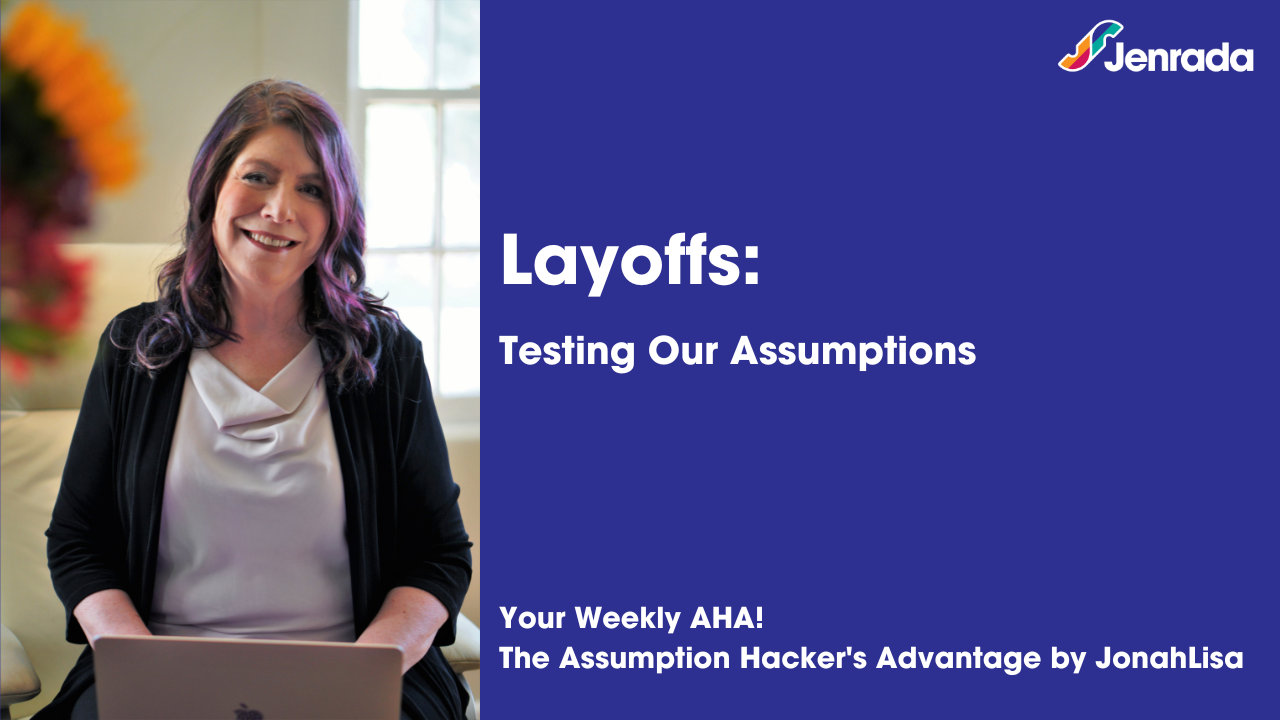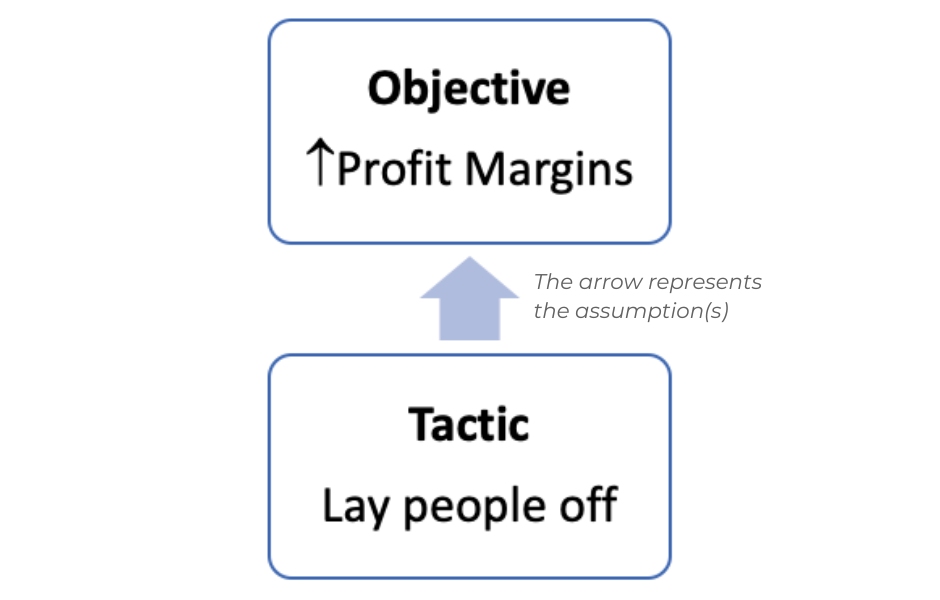
Layoffs: Testing Our Assumptions
Feb 21, 2023A 5-minute read today...
What is more important: being successful or being happy?
This is the question I read in a recent New York Times article that the Zen master Thích Nhất Hạnh posed to Salesforce CEO Marc Benioff.
Benioff’s reply to the monk was “both”. A discussion apparently ensued in which Nhất Hạnh cautioned Benioff about having too many priorities. “If everything is important, then nothing is important”, he warned.
The article went on to talk about how Benioff modeled Salesforce from his belief in the compatibility of philanthropy and capitalism, and how Benioff refers to the Salesforce workforce as one big family.
The concept of Salesforce as a family is reinforced by the company’s use of the word “Ohana” to describe itself. Ohana is Hawaiian for “family”. In a video on the company’s website, a panel describes the Salesforce Ohana as a “deep seated support system, nurtured every day with every employee and all communities.” An environment of togetherness, collaboration, fun, and customer success.
This is when the real question the article was posing became apparent:
Who is more important, shareholders (aka owners) or employees?
Like many tech companies in early 2023, Salesforce’s revenues and profits are growing, but not steep enough for investors. So, like many tech companies in early 2023, Salesforce laid off about 7,000 employees - roughly 10% of its workforce.
Benioff rationalized the layoffs by saying, “The reality is, when you have a big company with 80,000 employees, there are going to be tough times. You have to make a headcount adjustment.” He proceeded to describe the generous layoff packages the company gave to the employees it let go.
Imagine a large, loving family. The parents recognize that they are not putting money into their savings or investment accounts at the rate they wanted to. So, they conclude that their only option is to disown 10% of the family in order to rapidly get to their targeted savings rate. To get themselves back on track, the parents give the family members that they’ve kicked out some money to help them pay for their expenses for a few months.
Under Pressure
Salesforce has achieved impressive growth. But its growth, profitability and operating margins are well below the average of companies considered to be its peers. And that has led to stunted growth in value for shareholders. Over the past several months, some “activist investors” acquired large stakes in the company and are putting pressure on the top management team to aggressively focus on increasing profit margins in order to increase shareholder value.
Mr. Benioff is clearly under tremendous pressure by Salesforce shareholders to improve profit margins.
And what’s the go-to tactic when under pressure to improve profit margins? It’s to lay off some of the workforce. As alluded to in the article, Benioff believed that he had no choice but to let 7,000 of his Salesforce “family” members go.
Salesforce’s stock price jumped by nearly 5% on the day the layoff announcement was made. And as the layoff was carried out and the activist investors have become more visible, shares in Salesforce have risen more than 20% since the start of the year. Salesforce isn’t alone. Wall Street has reacted similarly to the layoffs announced by other tech companies.
While the most obvious solution is to let people go, is there really no other choice? Is it possible for Salesforce (or any company for that matter) to deliver profits, drive up value for shareholders, AND retain its workforce? It’s “family”?
An Opportunity for Assumption Hacking
Expose
The first step in the Assumption Hacking Framework is to expose the assumption being made. In this case, the assumption to expose is the reason why laying people off is believed to be the necessary tactic for achieving better profit margins.

I’m not an insider, so I can only speculate the assumptions made by Benioff and his team. But working with leaders across a wide spectrum of industries over 3+ decades, I’ve seen this play out before.
Profit margins improve when growth in revenues outpace growth in costs.
When leaders reach for layoffs as their go-to tactic, it’s usually because they lack confidence in their company’s ability to further increase revenues.
Customers are the source of revenues, and customers are outside of the CEO’s control. The only thing in their control is cost. So, that’s where they go.
But for this to be a successful tactic, the company must be able to support its customer demand with the smaller workforce. There needs to be no negative impact for customers. If there are noticeable hiccups, then revenues are at risk of slowing.
Therefore, one of the critical assumptions made must be that the people laid off were true excess capacity.
In the article, Benioff alluded to another assumption. “But this is the opportunity for growth. If you’re in a steady state, you don’t grow.” The implication of this statement is an assumption there was too much inertia - too much attachment to status quo - that the people (at all levels) of Salesforce were otherwise unable to come up with ways for the company to be much more productive. And thus, a major jolt to the system (letting 7,000 people go) was needed.
Three potential assumptions surfaced:
- Changing the sales trajectory is out of the company's hands
- The laid off people were true excess capacity
- The people of Salesforce were unable to get out of their inertia and become more productive without a major jolt
Challenge
The next step in the Assumption Hacking Framework is to challenge the exposed assumptions.
Don’t defend it. Challenge it. Investigate its validity. Because when decisions are based on faulty assumptions, the results we seek are likely to fall short. If any of the assumptions postulated are the reasons for the layoff, then the questions to be explored and tested are:
Can Salesforce change its revenue growth trajectory?
Salesforce is the leader in the CRM software industry, and enjoys nearly 23% market share. That's a lot of market share! But it also means that 77% of the market is untapped for them. I can't help but wonder what creative solutions and offers might be hiding in plain sight.
Did the company cut only excess capacity?
II would want to check the method used for selecting who would be let go. For example, if it was simply 10% across the board, they may have reduced the capacity of a constraint or took out too much needed protective capacity.This would be akin to trying to make a chain stronger by weakening all of the links, including the weakest link. How many companies do you know that went through a major layoff only to reverse course and start frantically hiring just months later.
Is the inertia impenetrable?
Are the people in the company so stuck in status quo that they are unable to come up with processes that would increase productivity and create the ability to handle a much higher rate of sales with the workforce that it had? Could it do this without the major jolt of letting go 7,000 people? I can't help but wonder if they have they been introduced to the rules of flow and given an opportunity to adapt their measures and methods to increase the velocity from first input to final deliverable.
Solve
Once we find a core assumption to be faulty, the path opens for the third step in the Assumption Hacking Framework: to leverage the discovery and create a breakthrough solution.
I empathize with Marc Benioff and other leaders like him who end up feeling forced into letting people go. I suspect he found himself between a rock and a hard place, with the vultures circling overhead.
But I also believe that there are assumptions untested and win-win-win breakthroughs waiting to be discovered.
The demands from both customers and shareholders are not going to slow down and the company now has 10% fewer people to respond. I hope they can find their way and stay true to the values that made them rank consistently among the top companies in the world to work for and to do business with.
Thanks for reading, and I'll see you next Tuesday.
Whenever you're ready, here are a couple of ways I can help you:
- SBC Assessment. In a one-on-one session, I guide you to use the Assumption Hacking Framework to uncover the faulty assumption at the core of your Single Biggest Challenge.
- Jenrada Programs. Workshops and longer engagements that we customize to help you uplift your organization into one of aligned problem solvers delivering extraordinary results. Complete this form, reply to this email, or schedule a discovery call.
Your Weekly AHA!
Every week, receive one actionable tip from JonahLisa to help you create breakthrough in your business and life.
We hate SPAM. We will never sell your information, for any reason.
